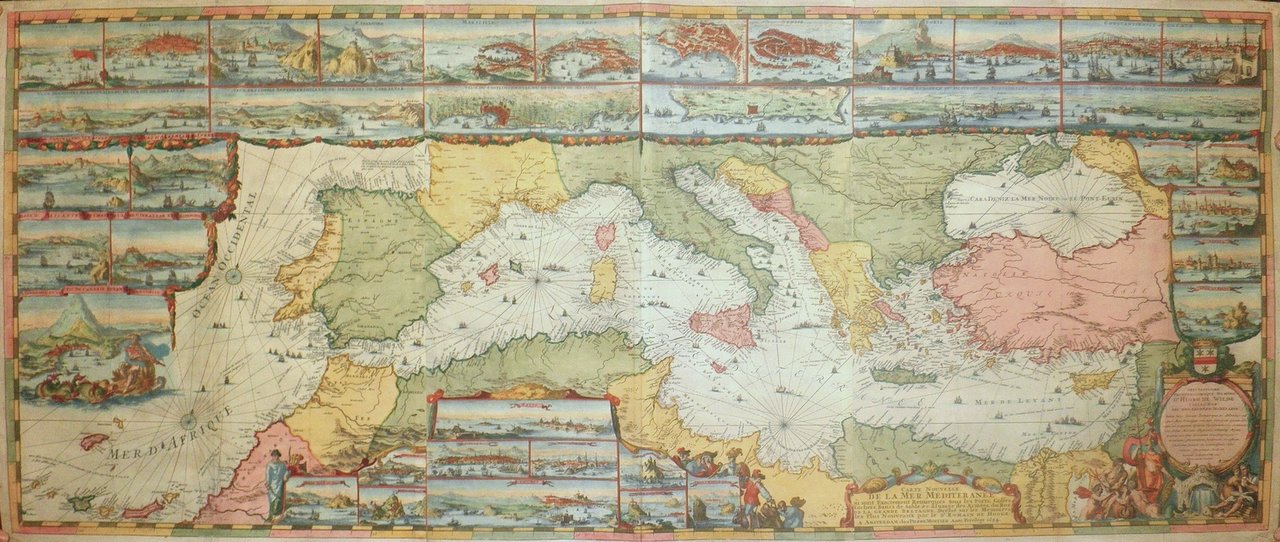Details
Place of printing
Amsterdam,
Engravers
DE HOOGHE ROMEYN.
Description
Incisione in rame, colorata, d'epoca e successivamente rinfrescata, tre lastre unite per totali mm 590x1410. Primo stato su quattro.<BR>Bell'esemplare della più celebre e scenografica carta del Mediterraneo, capolavoro della cartografia olandese e di Romeyn De Hooghe, in assoluto uno dei più famosi autori ed incisori, ricercato proprio per l'estrema ricchezza decorativa delle carte prodotte. La carta è abbellita ad arco da 38 vedute di città e porti, oltre che da galeoni e mostri marini. Essa proviene dal Neptune François pubblicato da Mortier in cui una sezione di nove carte intitolata Cartes Marines a l'Usage des Armées du Roy de la Grande Bretagne è completamente incisa da De Hooghe. La carta del Mediterraneo è la più grande e bella di tutte. Koeman in "Atlantes Neerlandici", IV, Mor 7-9 riferisce come "the most spectacular type of maritime cartography ever produced in 17th century Amsterdam." E "most expensive sea atlas…intended more as a show-piece than something to be used by the pilots as sea".<BR>Egmond, Covens-Mortier, I/IV; Whitfield, P. (Maritime) pp.86-7; Koeman, C. (Atlantes) IV, Mor 7-9.<BR><BR>Copper plate, Original colour with additions. Three sheets joined, total mm 590x1410. First state out of four. A monumental antique sea chart of the Mediterranean Sea, embellished with 38 inset maps and views of the major ports and harbors of the Mediterranean. Throughout the seas are numerous galleons and galleys, while allegorical figures and sea monsters adorn the insets. The chart appeared in one part of Mortier's "Neptune François", titled "Cartes Marines a l'Usage des Armées du Roy de la Grande Bretagne". The nine charts of this section, all engraved by Romeyn de Hooghe, one of the foremost artist/etchers of the period, was described by Koeman as the "most spectacular type of maritime cartography ever produced in 17th century Amsterdam": and the Mediterranean is the largest and most intricately decorated of the nine. Mortier's motives in the production of this atlas was to flatter the Dutch king on the British throne since the Glorious Revolution of 1688, William III, to whom it is dedicated. The unprecedented size of the atlas and the use of artists such as de Hooghe were not cheap: Again Koeman calls it the "most expensive sea atlas" of the period, "intended more as a show-piece than something to be used by the pilots as sea". <BR>Bell'esemplare con minimi strappi e mancanze marginali, lievi rinforzi.<BR>Egmond, Covens-Mortier, I/IV; Whitfield, P. (Maritime) pp.86-7; Koeman, C. (Atlantes) IV, Mor 7-9.<BR>

Find out how to use
Find out how to use
